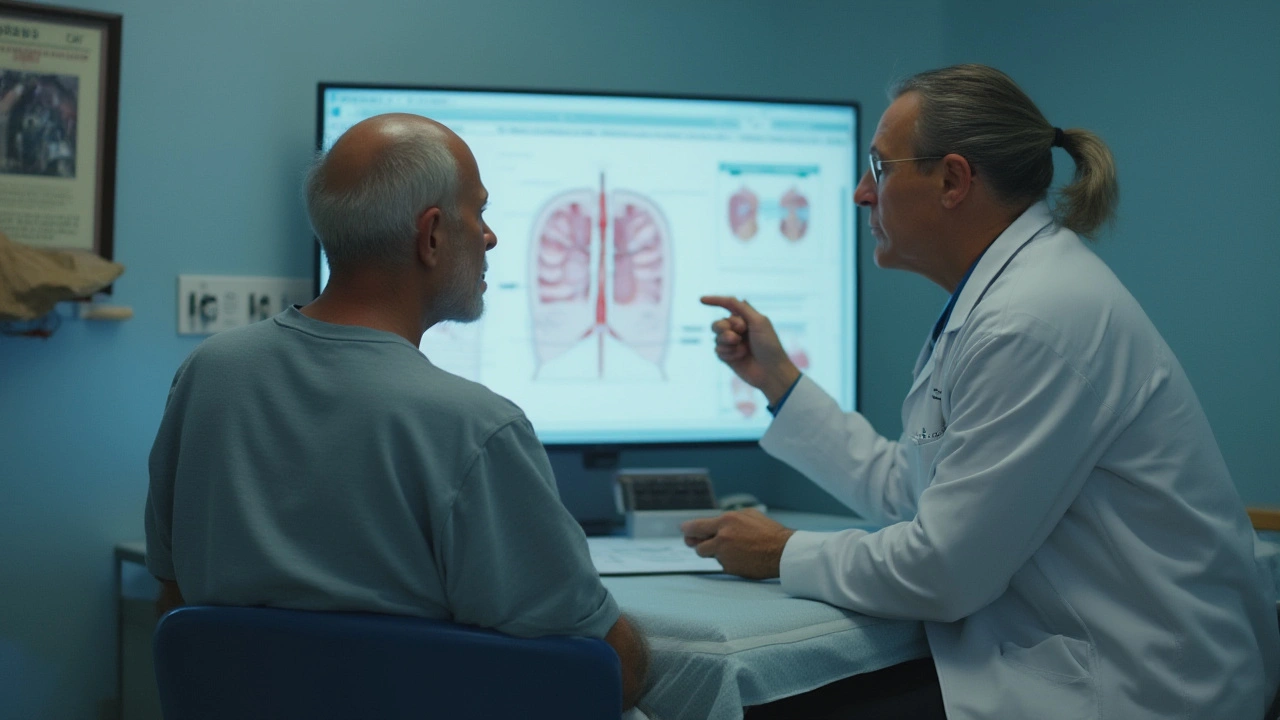Liver Disease: What You Need to Know
When your liver starts sending warning signals, it’s easy to feel lost. Fatigue, yellow skin, unexplained weight loss – these aren’t just random complaints, they can be signs that your liver isn’t working right. In this guide we’ll break down the most common causes, what to look for, and how to manage the condition without drowning in medical jargon.
Common Causes and Risk Factors
The liver can be damaged by a handful of everyday things. Chronic alcohol use tops the list – even moderate drinking over many years adds up. Viral infections like hepatitis B and C also take a toll, and they often sneak by with no symptoms until serious damage occurs.
Metabolic issues are another big player. Non‑alcoholic fatty liver disease (NAFLD) shows up when excess fat builds up in liver cells, usually because of poor diet, lack of exercise, or insulin resistance. If you’ve been diagnosed with diabetes or obesity, keep an eye on liver health.
Medications matter too. Over‑the‑counter pain relievers such as acetaminophen, when taken in high doses, can overwhelm the liver’s detox system. Even some prescription drugs, especially certain antibiotics and cholesterol‑lowering pills, have a known risk of liver toxicity.
Genetics can’t be ignored. Some people inherit conditions like hemochromatosis (iron overload) or Wilson’s disease (copper buildup) that directly attack liver tissue. If liver disease runs in your family, regular screening is a smart move.
Managing Liver Disease: Meds, Lifestyle, and Supplements
First thing’s first: talk to a doctor and get proper testing. Blood work, imaging, and sometimes a biopsy will pinpoint the type and stage of liver disease. Once you know what you’re dealing with, treatment becomes clearer.
For virus‑related liver damage, antiviral medications can suppress hepatitis B and C, often halting progression. If alcohol is the culprit, cutting it out completely is non‑negotiable – the liver can heal, but only if it stops being assaulted.
When fatty liver is the issue, lifestyle changes are the backbone of therapy. Swap sugary drinks for water, aim for at least 150 minutes of moderate exercise a week, and choose whole‑grain carbs over refined ones. Weight loss, even modest (5‑10% of body weight), can shrink liver fat and improve function.
Medication safety matters. Our site offers easy‑to‑follow guides on buying prescription meds online, but always verify that the pharmacy is licensed and that you have a valid prescription. Some drugs, like certain statins or blood thinners, need dose adjustments in liver disease, so never start or stop meds on your own.
Supplements can help, but they’re not a free pass. Milk thistle (silymarin) is popular for its antioxidant properties, yet research shows mixed results. Vitamin D and B‑complex vitamins often become deficient when the liver struggles, so a blood test can guide supplementation.
Watch out for hidden liver stressors: herbal remedies, high‑dose vitamins, and even some over‑the‑counter cold medicines can be harsh. Always read labels and discuss any new product with your healthcare provider.
Finally, keep up with regular check‑ups. Monitoring liver enzymes (ALT, AST) lets you and your doctor catch changes early. If you notice new symptoms – swelling in the abdomen, dark urine, or persistent nausea – reach out right away.
Living with liver disease isn’t a sentence. By knowing the risks, staying on top of medication safety, and embracing a healthier lifestyle, you give your liver the best chance to recover and keep you feeling good.
Get a clear look at hepatic encephalopathy—what causes it, what symptoms to watch for, and practical treatment steps that can save a life.
